The Artificial: Programming and Planetarity
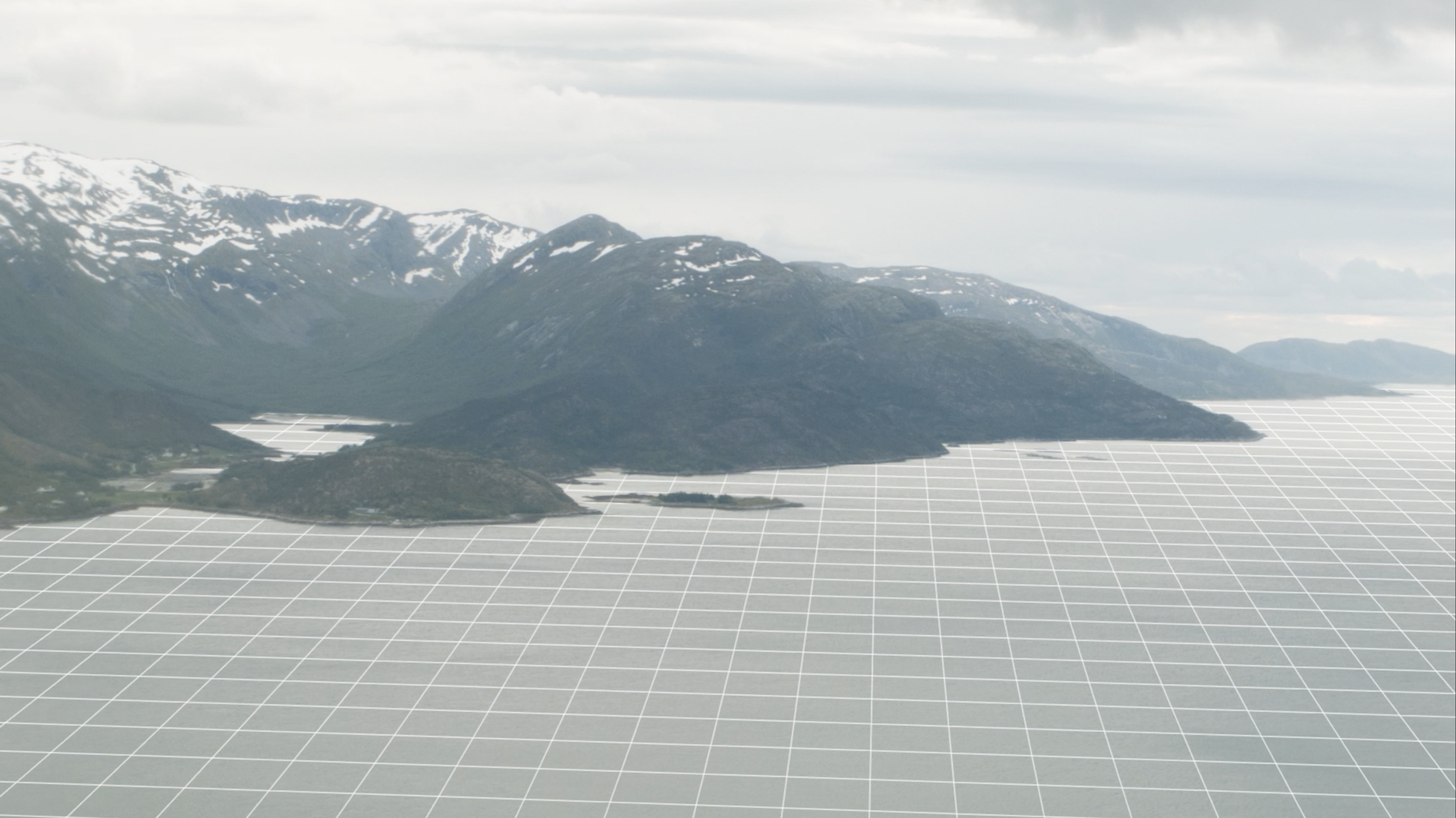
The seminar will trace the interwoven history of “artificial intelligence” as both a philosophical thought experiment and as a foundational technology, and will explore alternatives to anthropomorphic models of AI. We will consider existing and potential forms of human-AI interaction design, such as voice and search. We will consider the history and contemporary state of artificial sensing media, such as machine vision. The seminar will also map how modern urban systems may be evolve in relation to pervasive automation and distributed computational interaction. The class will include lecture based discussions as well as research into AI systems embedded in the city. It will also include a remote lecture from Kenric McDowel, AI curator at Google Research.
The class will meet for extended seminar and field sessions during the first three weeks of the term (3 Thursday seminar and weekend field research sessions) followed by online sessions and further in-person meetings.
Instructor:
Benjamin H. Bratton joins NYU Shanghai as Visiting Professor of Interactive Media Arts and Director of the new NYU Center for AI and Culture. His work spans Philosophy, Art, Design and Computer Science. Bratton is Professor of Visual Arts and Director of the Center for Design and Geopolitics at the University of California, San Diego. He is Program Director of The New Normal programme at Strelka Institute of Media, Architecture and Design in Moscow. He is also a Professor of Digital Design at The European Graduate School in Saas-Fee, Switzerland and Visiting Faculty at SCI_Arc (The Southern California Institute of Architecture) in Los Angeles.
http://www.bratton.info/
Alternative Facts:
Construction of Authenticity in Contemporary Art Practice
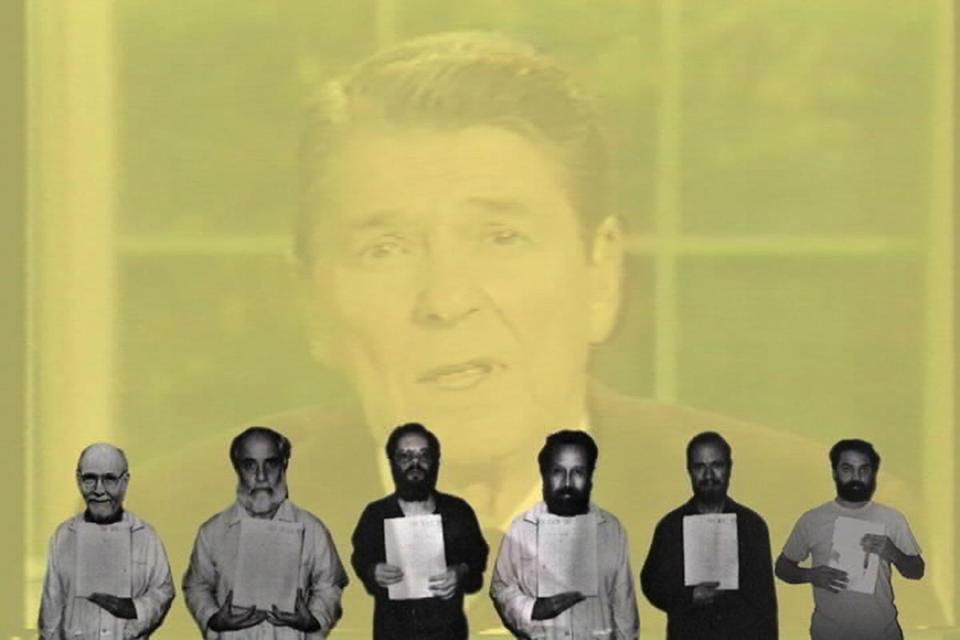
What does it mean to tell the truth in art? How does art cross the boundaries between the real and the fake, truthfulness and misrepresentation? This course will examine social and political engagement in art and the construction of authenticity based on the trust of viewers rather than the truth. The class will take a field trip to a propaganda museum, have readings and discussions, and analyze contemporary artists working with fiction as a medium in art making. Students will conduct research in fiction-making related to real events and explore object making and narrative construction through 3D fabrication and documentary.
Instructor:
Inmi Lee is an artist and an educator whose work draws from existing sociopolitical conditions, particularly surrounding language and speech and create speculative narratives that reveal our latent social desires. The research-based fictions critiques the limitations of existing solutions of social problems while expanding the imaginary around these issues. She has presented her work nationally and internationally at FutureFest in London, Anren Biennale in China, SIGGRAPH, Digital Art Biennale in Seoul, Boston Cyberarts Festival, International Performance Art Festival in Beijing, and in Madrid Abierto, Spain. She holds a Ph.D. in Digital Art and Experimental Media from University of Washington, an MFA from Rhode Island School of Design, and a BFA in Visual Communication from School of the Art Institute of Chicago.
Exploring Movement Practices with Physical Computing
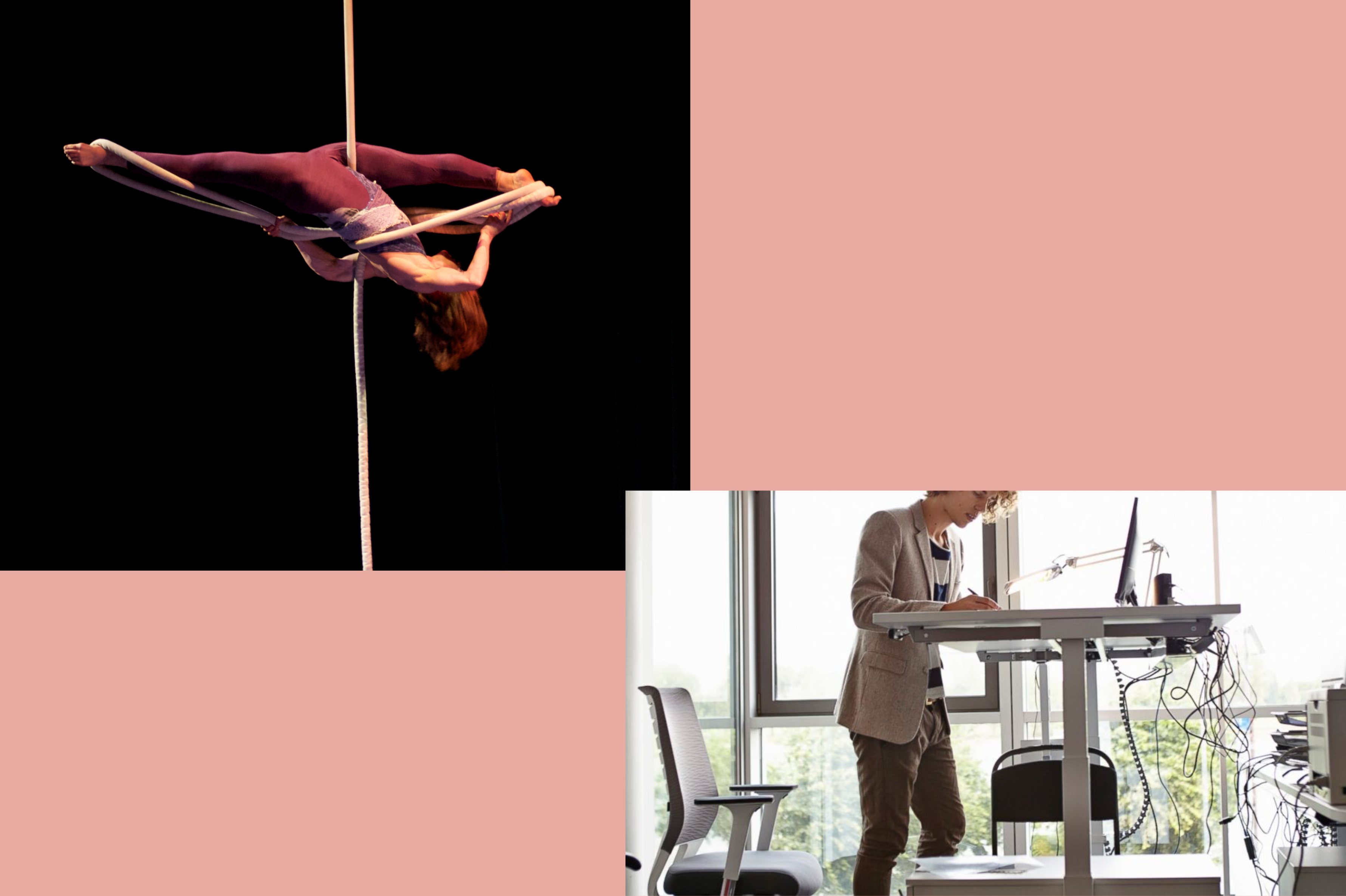
This course is about ways that we “think with the body”. We will bring practices such as fitness, dance, sports, and martial arts into a series of interactive installations, movement learning projects, and workspace modifications built on computing, sensing and actuator technologies. We will also explore this area through review of existing creative projects, readings, presentations, and knowledge-sharing sessions.
https://movement-practices.netlify.com
Instructors:
Margaret Minsky creates multimedia artifacts exploring learning, improvisation and thought. Her recent investigations concern embodied interaction with technology aimed at increasing cognitive, social, and physical wellbeing. She recently completed a residency at the ATLAS Center, an interdisciplinary laboratory at the the University of Colorado-Boulder.
Her core research has been in the field of haptic interfaces (computational interfaces that simulate objects that you can touch and feel), as well as in computer graphics and educational technology. She developed the first technique for creating haptic textures as part of her doctoral research at the MIT Media Lab. Her publication areas are in computer graphics, haptics, mechanical engineering, and educational computation, and she has served on conference program committees including Siggraph. Dr. Minsky previously directed research at Atari Cambridge Laboratory and Interval Research Corporation. Her work has been presented internationally, and she currently works as a consultant.
Oliver Steele is an Assistant Professor of Arts at NYU Shanghai. Prior to this appointment, he was a visiting faculty in Computing and Technology at Olin College in Massachusetts, USA.
Previously, Oliver worked in industry, where he held positions at Apple Computer, AOL, Nest Labs, and a variety of startup companies as a CTO, engineering manager, product manager, and software architect. He has built web, embedded, and operating system products in C, C++, Java, JavaScript, Python, Ruby, Common Lisp, and other languages, and collaborated on the design of a programming language (Dylan). He currently advises technology startups in San Francisco, New York, and Boston. His interests include juggling and woodworking.
https://osteele.com
Media Architecture
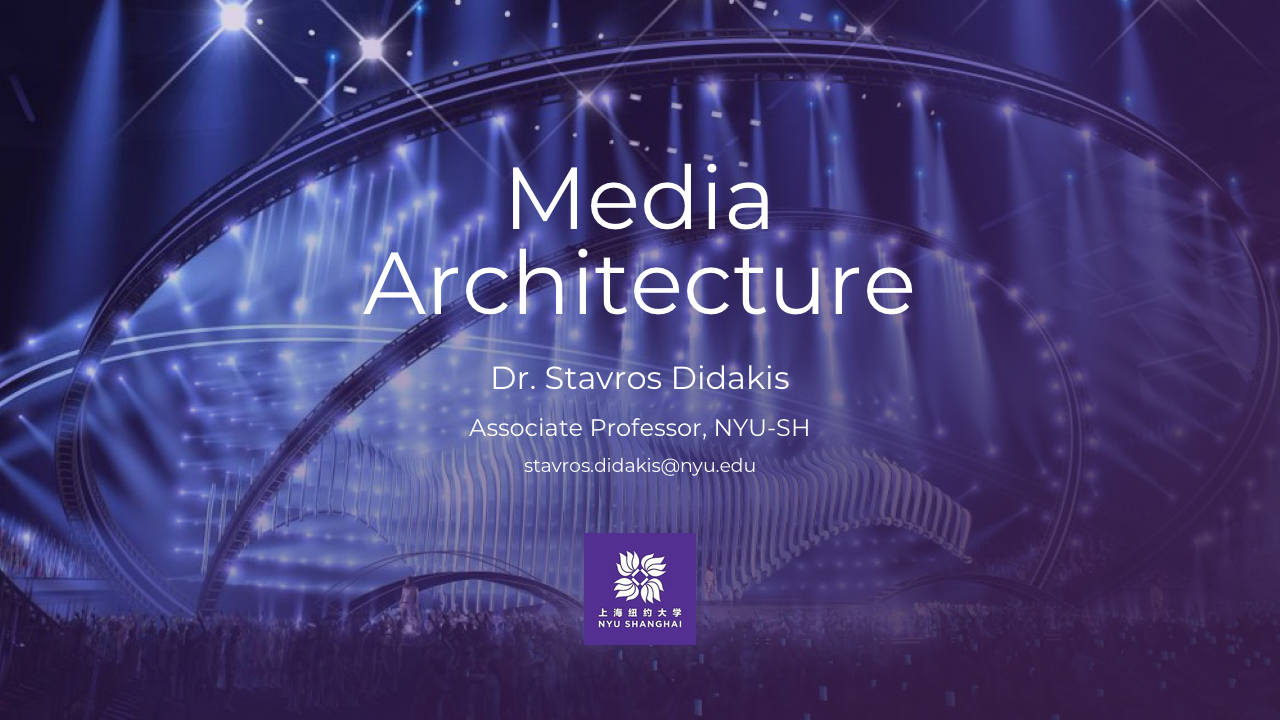
Architecture has always been considered as an immediate extension of the human civilization, and its connection with state-of-the-art technologies has always been essential. In our current highly mediated and augmented environments, architecture shifts from static, solid, and predefined, to a fluid, interactive, and ever-changing. Computational, interactive, and media technologies challenge our understanding of what architecture is, redefining our engagement with exterior and interior spaces.
The course investigates the area of media architecture from a contextual and critical perspective, examining and implementing in theoretical and practical scenarios current emerging trends. Students are expected to develop a comprehensive understanding of media architecture, to thoroughly investigate the media cityscape (including motivations, social implications, technological requirements), and to develop installation work that utilizes contemporary media development practices and demonstrates artistic, technological, and scientific rigor.
Instructor:
Stavros Didakis is an international artist, researcher, and academic, creating interactions, systems and installations, challenging preconceptions and speculations on possible technological futures with practices that merge the disciplines of computational media, Internet of Things, interface design, as well as sonic, visual, and interactive art. His current research focuses on the development on architectural augmentations and inhabitant personalization, exploring sensorial interfaces and technological frameworks as extensions of human environments. Stavros has won grants and awards in creative technologies, he has exhibited his interactive works in international exhibitions and biennale, and he has also made numerous publications in conferences, journals, and books. He holds a PhD, and a Fellowship in Higher Education Academy (UK).
http://www.soniconlab.com
What is New Media?
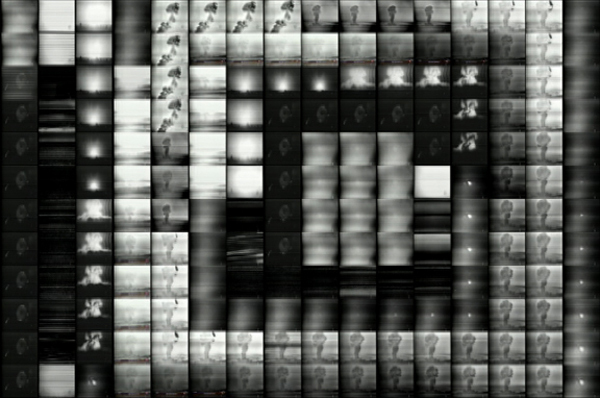
This course will explore the fundamentals of new media scholarship. Together, we will review and engage with different theories of emerging media in its social, cultural, political, corporeal, and artistic contexts. By course’s end, students will be able to research, think and write critically about some of the central issues in media theory.
Instructor:
Weixian Pan holds a PhD in Film and Moving Image Studies from Concordia University, Montreal, and an MA in Film Studies from University of St Andrews, UK. Her research focuses on the intersection between global media and environments, particularly from the perspective of China and the Global South. Her current book project, China Southern: Digital Environments as Geopolitical Contact Zones, examines how digital media shapes the materiality and political imaginary of land, sea, and air. Her recent writing appears in journals such as Asiascapes: Digital Asia, Synoptique, and Culture Machine. She has also worked as the lead coordinator in the Global Emergent Media Lab, and collaborates in several research initiatives including Life-Streaming Research Group and Digital Ethnography Workshops.
Critical Data & Visualization

The *world* that algorithms *see* is data. For the average person, however, data is seldom more than an abstract idea. So what exactly is data? And why should we care?
This class seeks to untangle critical issues concerning data in its theoretical part while introducing students to the craft of data visualizations practically.
Instructor:
Leon Eckert is a German programmer, researcher and artist focusing on the critical discussion of technology and its impact on society in a time of large-scale data collection and analysis. Leon received a bachelor’s degree in Design from Goldsmiths University, London and a master’s degree from NYU’s Interactive Telecommunications Program (ITP).
https://leoneckert.com
Understanding Financial Technology
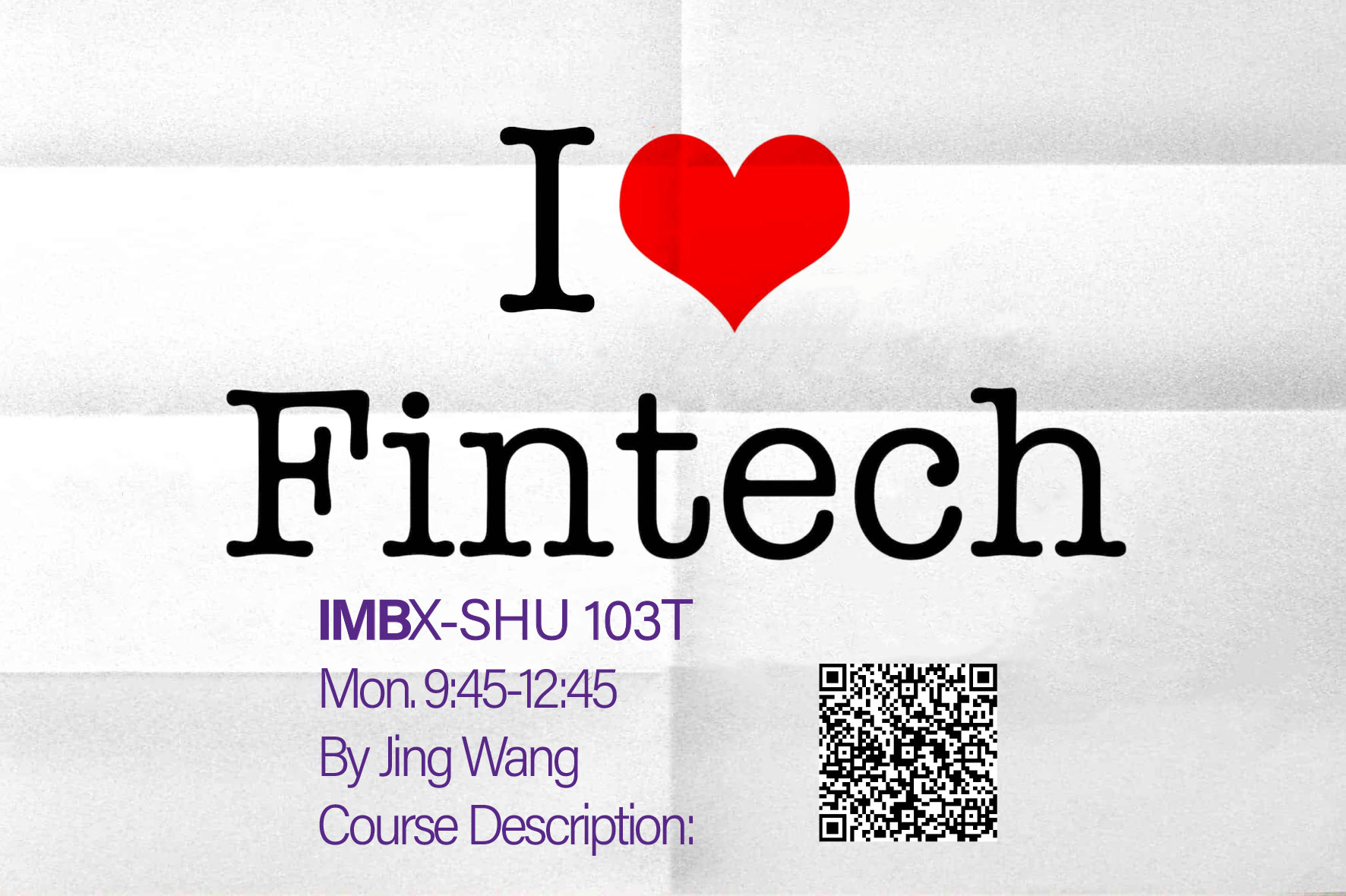
The financial applications of digital technologies, or so-called fin-techs have reshaped consumer behavior and investment cultures in the global context. This course is to make sense of fin-techs from a wide variety of perspectives. Integrating lectures with workshops and company visits, this course will equip students with critical thinking and practical skills that allow them to dialogue with various actors, such as computer programmers, project managers, investors, and academic intellectuals.
Instructor:
Jing Wang is Assistant Professor of Interactive Media Business (IMB) at NYU Shanghai. She holds a Ph.D. in Information and Communication from Rutgers University. Dr. Wang studies how information technologies influence the financial domain in the global context. Her recent work focuses on the social and political implications of Chinese fin-techs. Specifically, she examines how fin-tech companies reshape consumer behavior and investment cultures in China, and how the policy changes reconfigure the development of Chinese fin-techs. She has published her work in the journal of Telecommunications Policy, International Journal of Communication, The Political Economy of Communication, and Communication and the Public. She has also been invited to comment on The China Business News, and China Global TV Network.
Artificial Intelligence Arts
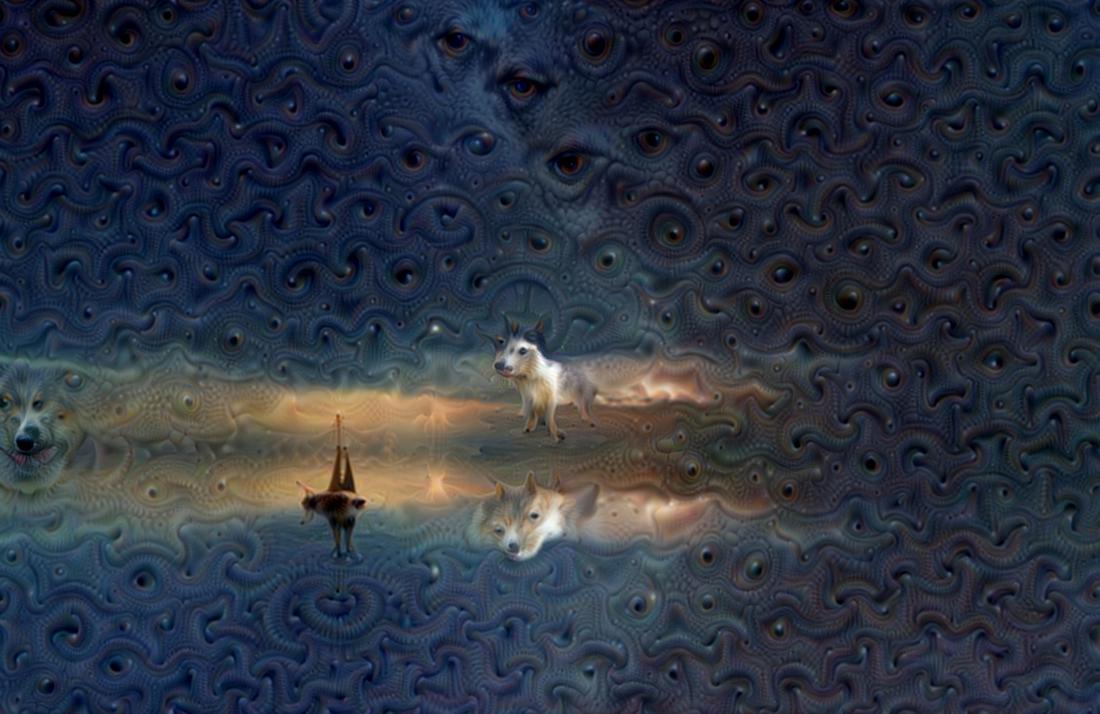
Over recent years, artificial intelligence creativity and generative machine learning have continued grow and attract much attention among art community. Generative models by Machine Learning have brought up new types of media creation including recent breakthroughs. Artificial Intelligence Arts is an intermediate class that broadly explores issues in the applications of AI to arts and creativity. We will look at algorithms for generation and creation of new media, arts and design. In addition to covering the technical advances, we also address the ethical concerns ranging from the use and creation of datasets, why build better creative tools to the attitudes towards artificial intelligent creativity.
https://wp.nyu.edu/shanghai-ima-aiarts
Instructors:
Aven Le Zhou is an AI artist and creative technologist based in Shanghai. He founded the AI augmented creativity and art studio Art Machines and leads cross-disciplinary practices in said organization. His artworks and research interests spread throughout interactive media, generative art and machine vision for arts applications. He recently focuses on utilizing artificial intelligence/machine learning to create art and design.
https://www.aven.cc
Machine Learning for New Interfaces
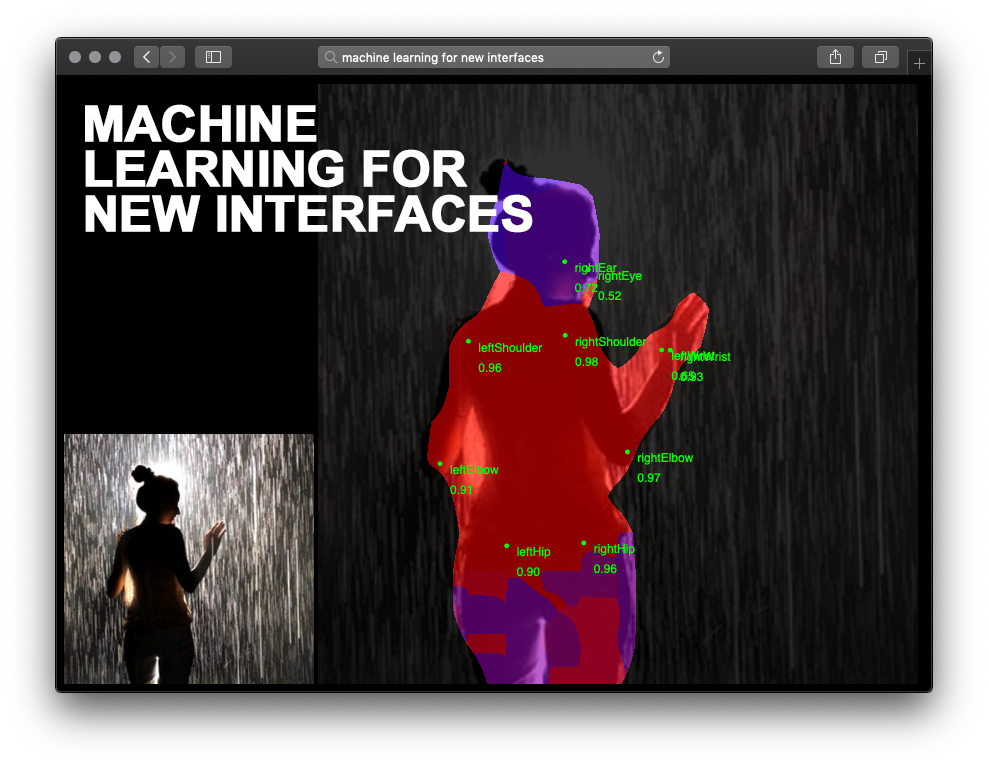
Machine Learning for New Interfaces is an introductory course with the goal of teaching machine learning concepts in an approachable way to students with no prior knowledge. It explores diverse and experimental methods in Machine Learning such as classification, recognition, movement prediction and image style translation. Students will apply fundamental concepts of Machine Learning, recognize Machine Learning models in the world and make Machine Learning projects applicable to everyday life.
Instructor:
J.H Moon, an interaction designer and creative coder, creates interdisciplinary work in new media. He’s known for his work, both experimental and mainstream, in the visual and performing arts. Moon is particularly known for his innovative use of lighting and dance in close collaboration with choreographers and dancers. He currently applies Machine Learning algorithm to dance choreography.
moqn.net
Assistive Technology
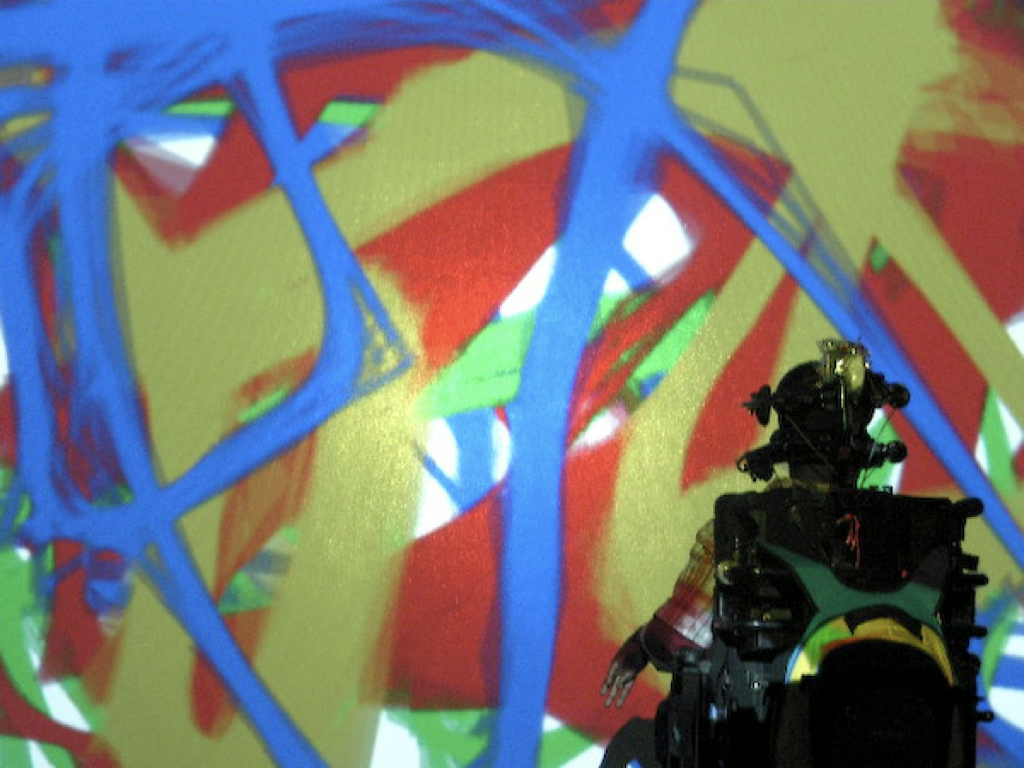
This project-based class focuses on the design and development of technology that increases the quality of life of individuals of disabilities. Software programming, physical computing, machine learning, and 3D fabrication will be introduced for constructing an assistive device. Students will participate in a team-based design project that identifies challenges for an individual of disabilities and create assistive devices to meet their needs.
Instructor:
Young Chung is a resident research fellow at the Interactive Media Arts program in New York University Shanghai. He is an engineer and artist with interests in assistive technology and interactive media art. His vision is to design systems that improve the welfare of humankind. With this goal in mind, he implements the idea that will benefit broad audiences, especially those who have limited access to technology’s diverse applications.
Acoustic Ethnography of the Yangtze River Delta
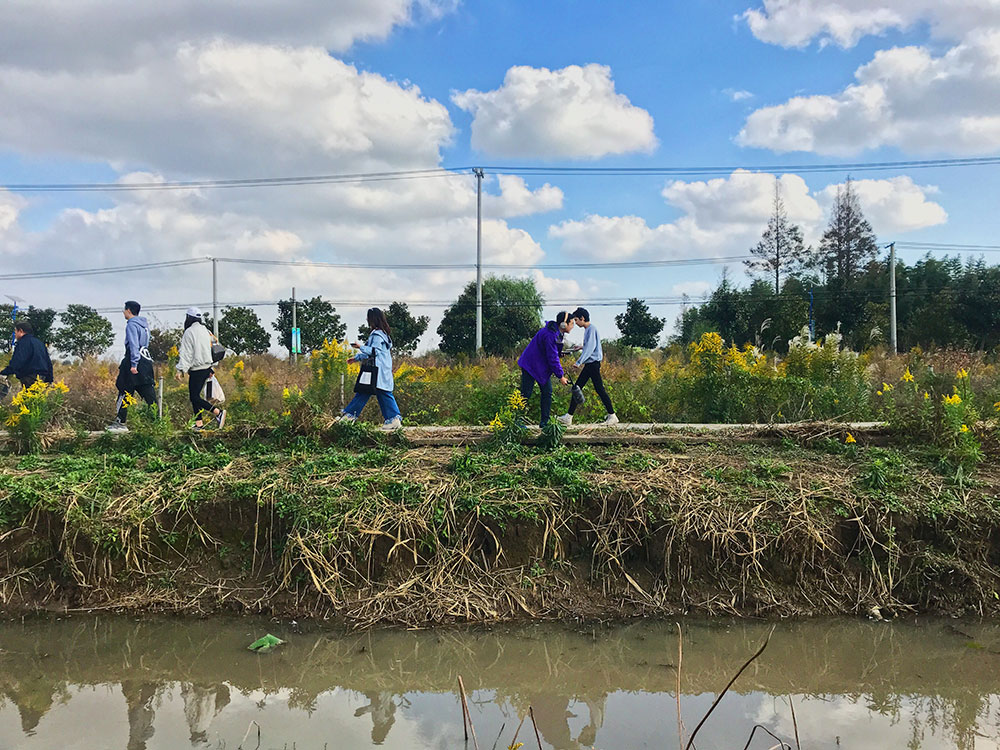
We live in a world immersed in sound yet we rarely attend to how sound can reflect our social structure or reveal cultural meaning. This course introduces students to acoustic ethnography, soundscape studies and narrative, non-narrative audio storytelling. We will gather and analyze the acoustic environment of China, using recorded sounds to create ethnography through text and sound. Ethnography (literally, “culture-writing”) is both the act of gathering data about culture through observation and interviews as well as the practice of writing analytically about cultural difference. Visual ethnography incorporates the analysis of visual and material aspects of our social environment into creative, multimedia rich projects. With an ethnographic approach to sound, we will document the rich tapestry of sounds around us in the context of the Yangtze River Delta region and think about how this conveys China’s culture, society and history.
Instructor:
Ann Chen is an interdisciplinary artist, filmmaker and researcher. She was a Fulbright National Geographic Digital Storytelling Fellow, UnionDocs Collaborative Studio Resident, a Visiting Fellow in English & Film Studies at the University of Alberta and a Sprint Fellow with Public Lab.
Digital Heritage
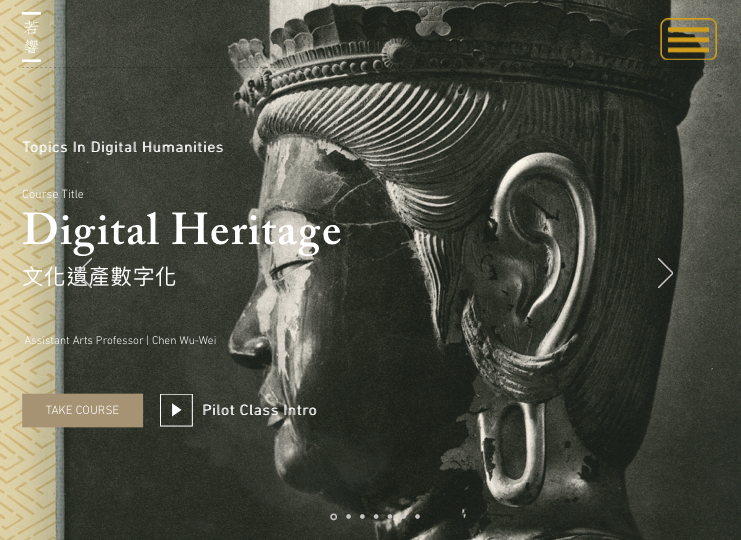
This course investigates and explores the integration between cultural heritage and digital conservation, specifically towards the objects, deities, and sites of China. Through the reflection of Chinese cultural heritages under technical perspective, the course raises the awareness of heritage conservation and critical heritage studies. Meanwhile, weekly readings revolving around the theme lectures enhance students’ senses of documentation and restoration by innovative digital techniques; Conservator presentations, field trips, and gallery visits enable students to communicate with practitioners in the field, and examine the values of Chinese cultural heritages under global perspective.
https://www.bodyasechoes.com/course-digital-sculpting
Instructor:
Chen Wu-Wei, PhD (Communication University of China), 2011, is an Assistant Arts Professor of Interactive Media Arts and an affiliated faculty with the Center for Global Asia in the School of Arts and Science, NYU Shanghai. He is the author of Body As Echoes: Cyber Archiving of Dazu Rock Carvings, co-author of Digital Cultural Heritage, Digital Buddhology, articles related to smart heritage, and an editorial board member of Computer System Networking and Telecommunications (2018). Prof. Chen previously worked on the digital documentation of selected caves and niches in the Dazu Rock Carvings. Currently, he is conducting field research at the Mogao Grottoes of Dun Huang, and will focus on the tangible/intangible cultural heritage of Solo, Borobudur and Jogia in Indonesia.
https://www.bodyasechoes.com/pedagogy
Digital Conservation for Buddhist Deities
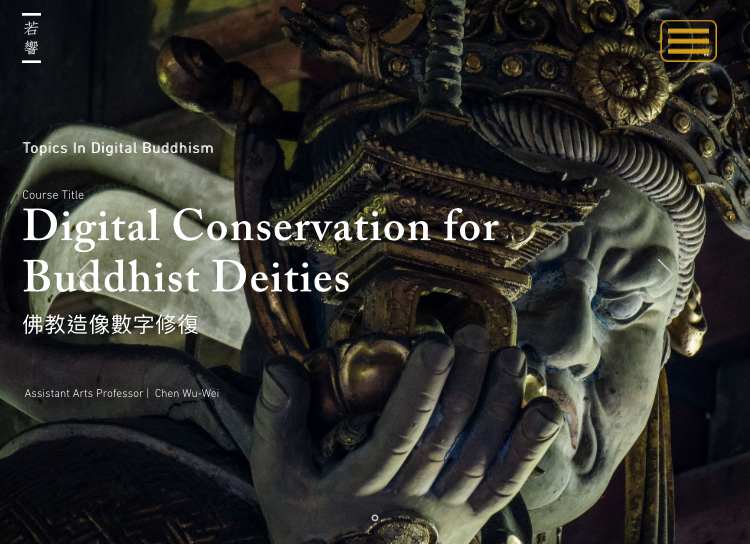
This course belongs to the series of topics in Digital Buddhism(Phenomenology, Iconography, Pedagogy, Technology). It aims to explore digital techniques utilized in Buddhist deities restorations. Directions in the course include: traditional restoration, digital imaging, digital sculpting, and innovative techniques as alternative methods.
Students will be guided to understand the different categories of buddhist deities, the traditional ways to restore by handcraft masters, restorations records review, non-intrusive ways to de-bug and protect deities, and principles of reversibility in the restoration process. Advanced optical technology to exam the cultural objects will be introduced in the course as well.
https://www.bodyasechoes.com/course-dcbd
Instructor:
Chen Wu-Wei, PhD (Communication University of China), 2011, is an Assistant Arts Professor of Interactive Media Arts and an affiliated faculty with the Center for Global Asia in the School of Arts and Science, NYU Shanghai. He is the author of Body As Echoes: Cyber Archiving of Dazu Rock Carvings, co-author of Digital Cultural Heritage, Digital Buddhology, articles related to smart heritage, and an editorial board member of Computer System Networking and Telecommunications (2018). Prof. Chen previously worked on the digital documentation of selected caves and niches in the Dazu Rock Carvings. Currently, he is conducting field research at the Mogao Grottoes of Dun Huang, and will focus on the tangible/intangible cultural heritage of Solo, Borobudur and Jogia in Indonesia.
https://www.bodyasechoes.com/pedagogy
Introduction to Robotics
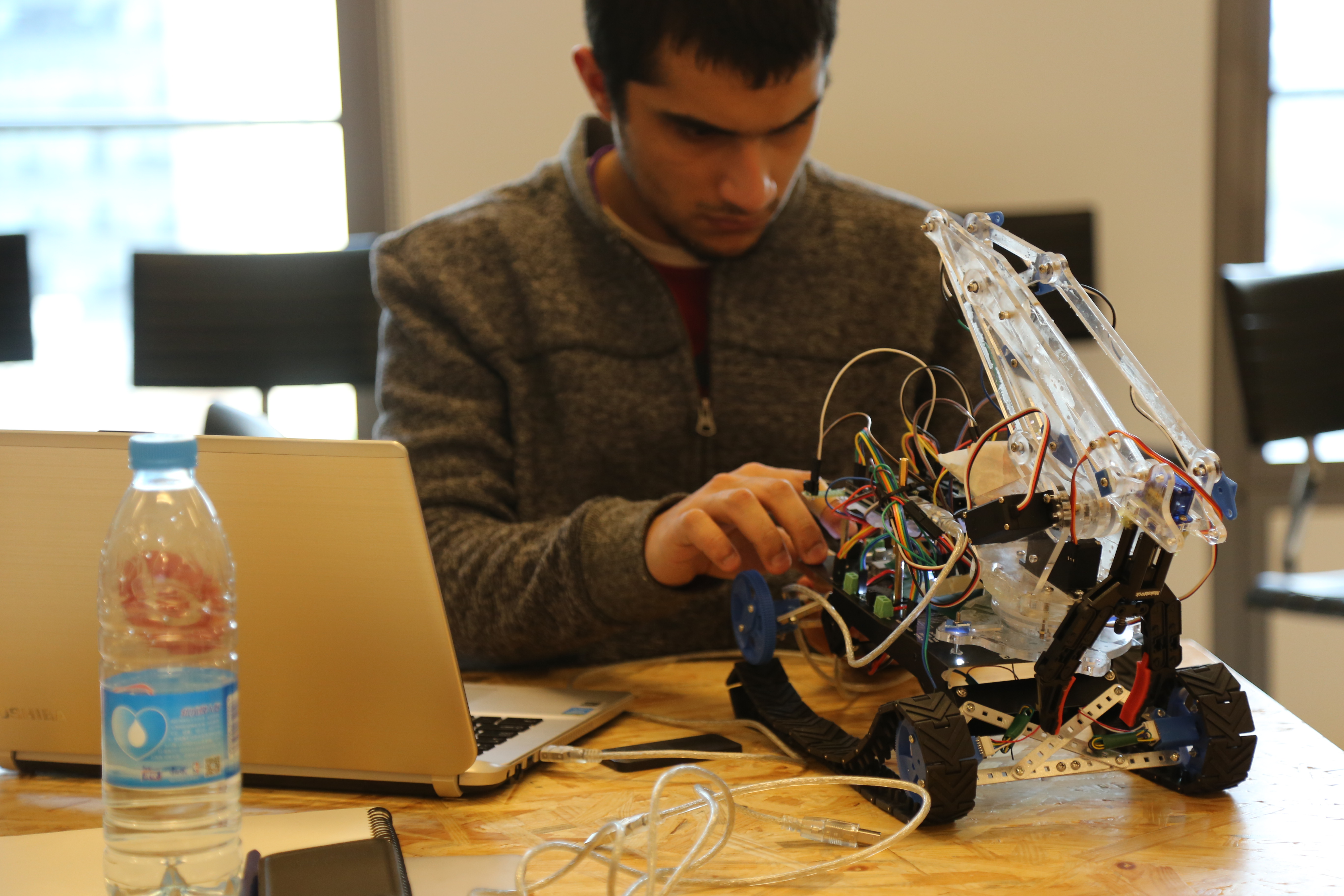
Since the beginning of civilization people have fantasized about intelligent machines sensing and acting autonomously. In this course we will discover what robots are, learn how to design them, and use simple tools to build them. Students will use open source hardware to explore sensors and electronics, as well as design and build robot bodies and actuators through a variety of digital fabrication technologies.
http://ima.nyu.sh/introduction-to-robotics/syllabus/
Instructor:
Rudi Cossovich has co-founded several projects with focus on Open Source Hardware both for robotics, education and electrical vehicles. He has successfully crowdfunded some of these projects and his work covered by major press outlets such as Popular Mechanics, CNN and CCTV. He is also an active member of the maker and entrepreneur community in Shanghai.
rudi.plobot.com
Programming Design Systems
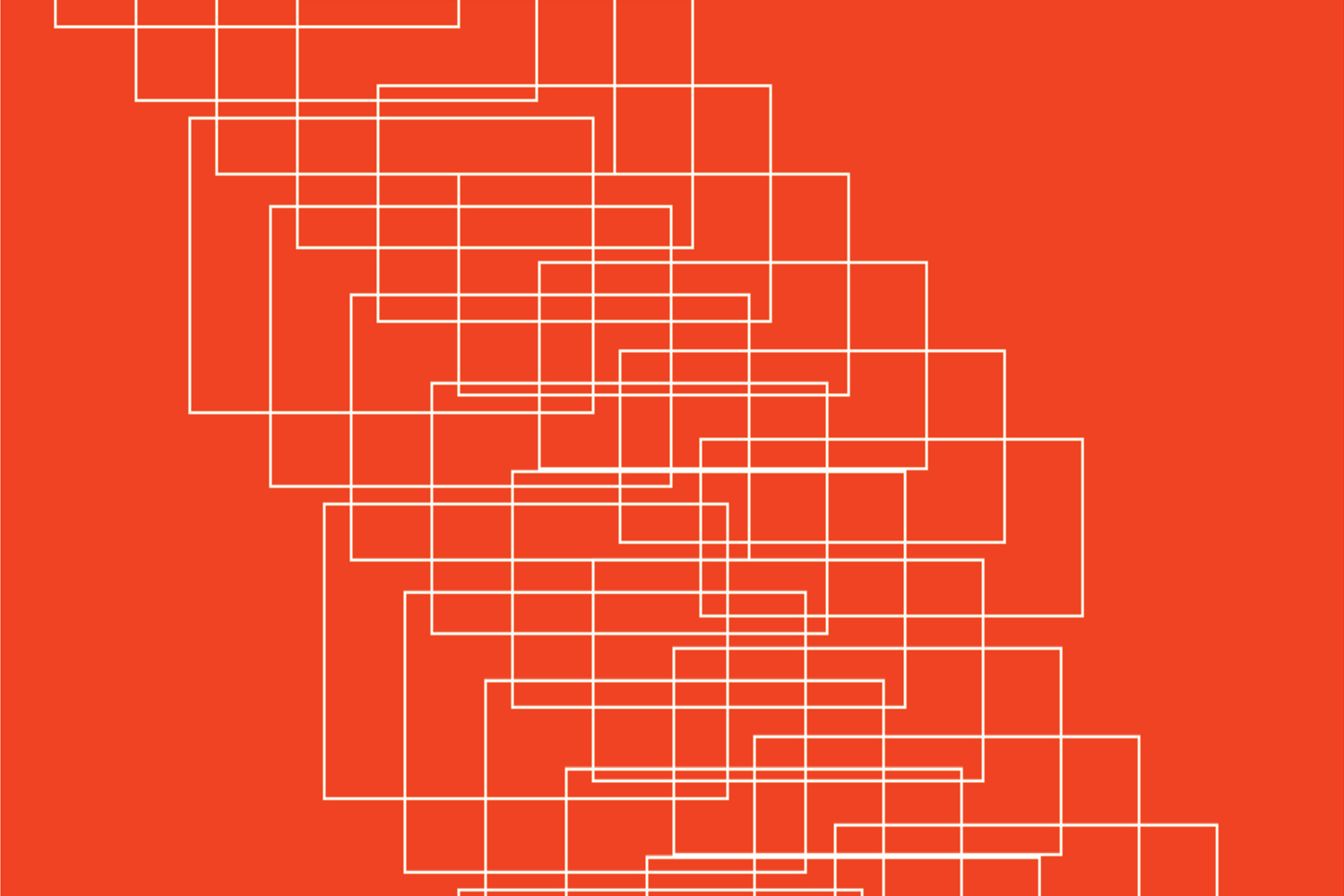
Programming Design Systems is a course focused on the intersection between graphic design and code. Class time is divided between design topics like form, color, grid systems, and typography, and more computational topics like randomization, repetition, transformation and generative form. The students work to write software that abstract design theories into the code, and show the work in class for design critique. Weekly readings include relevant writings from the history of graphic design, articles from the history of computation, and everything in between. The class aims not only to teach the students how to create designs via code, but also to have something interesting to say about it. The course is based on the Programming Design Systems book, and more background info can be found in the book’s introduction.
https://wp.nyu.edu/programmingdesignsystems/
Instructor:
Chang Liu is an artist and educator based in Shanghai and New York whose work explores the connection between the natural world and artificial world, the relationship between the self and interactive behaviors, living art philosophy and generative art. Chang practices on different mediums from paper, artist’s book, printmaking to computational materials, video installation, interactive installation, etc. In recent years, she has researched on algorithms in the context of visual art, the manufactured landscape in the developing society, as well as the interactive experience for museum and exhibition design, generative art in the contemporary and digital art field.
www.liuchang.work
Re-Made in China
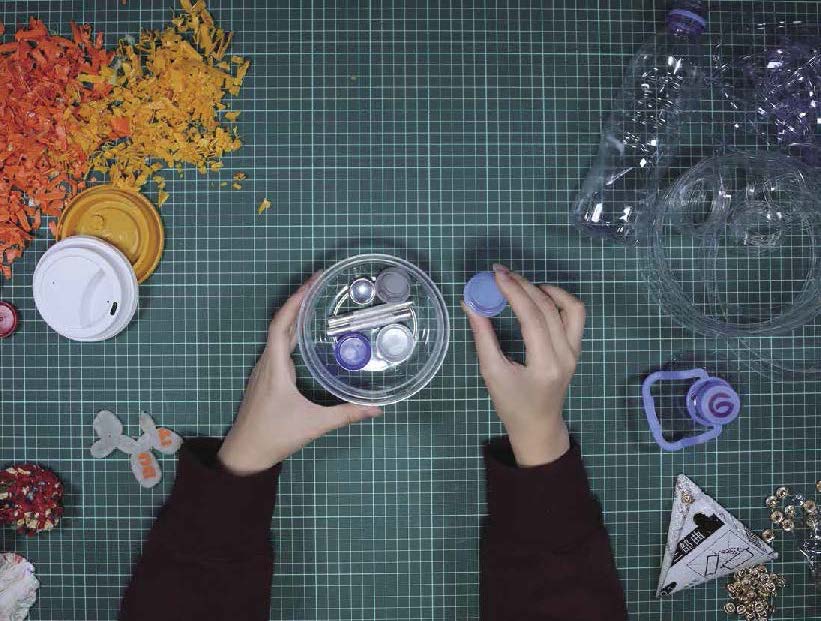
Re-make: make (something) again or differently.
In this class students will investigate why China has become the world’s largest importer of waste. They will study local communities in China, how they manage their waste, and explore innovative ways to transform discarded materials or products around us into something new and precious in areas such as art, graphic and industrial design, architecture, fashion, textiles, etc,. Through research and development, students will learn how traditional techniques and new technologies among the sustainable design philosophy can be utilized as powerful tools for addressing social and environmental problems.
https://wp.nyu.edu/shanghai-ima-remadeinchina
Instructor:
Marcela Godoy is a designer and maker. She graduated as an Architect and worked as an adjunct instructor and teaching assistant in three different schools of architecture in Chile, where she taught architecture, physics and structural design. She holds a MPS in the Interactive Telecommunication Program from New York University (NYU ITP) and she currently teaches Interaction Lab and elective courses related to Digital Fabrication, Craft, Design, and Coding, such as Toy Design and Prototyping, Data: Code it, Make it, Digital Fabrication, and (Re)Made in China.
http://godoymarcela.com/
Realtime Audiovisual Performance Systems
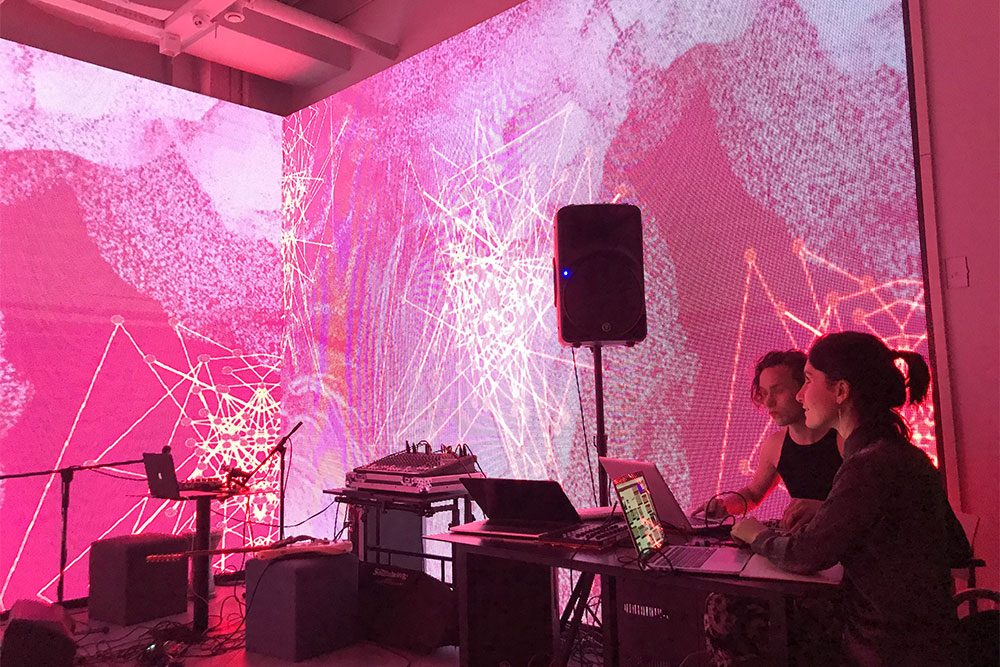
From the history of visual music and abstract film to the contemporary notion of live cinema, this course is an exploration of the synesthetic relationship between sound and image in a real-time performance setting. Through readings, viewings, and case studies students gain an understanding of the history and theory of live audiovisuals. During the course students team up to develop and master a real-time audiovisual system of their own invention.
Instructor:
Eric Parren (NL/US) is an interdisciplinary artist operating out of Shanghai. His practice is situated at the intersection of art, science, and technology. Using a combination of digital and analog media, he investigates our understanding of the ideas and technologies that shape the future. Eric's works are often visceral sensory experiences exploring modes of perception and the physics of light and sound. Informed by a deep knowledge of the histories of media arts, electronic music composition, and expanded cinema, his work makes links between the past, the present, and what is to come.
http://ericparren.net
The Cultivated City
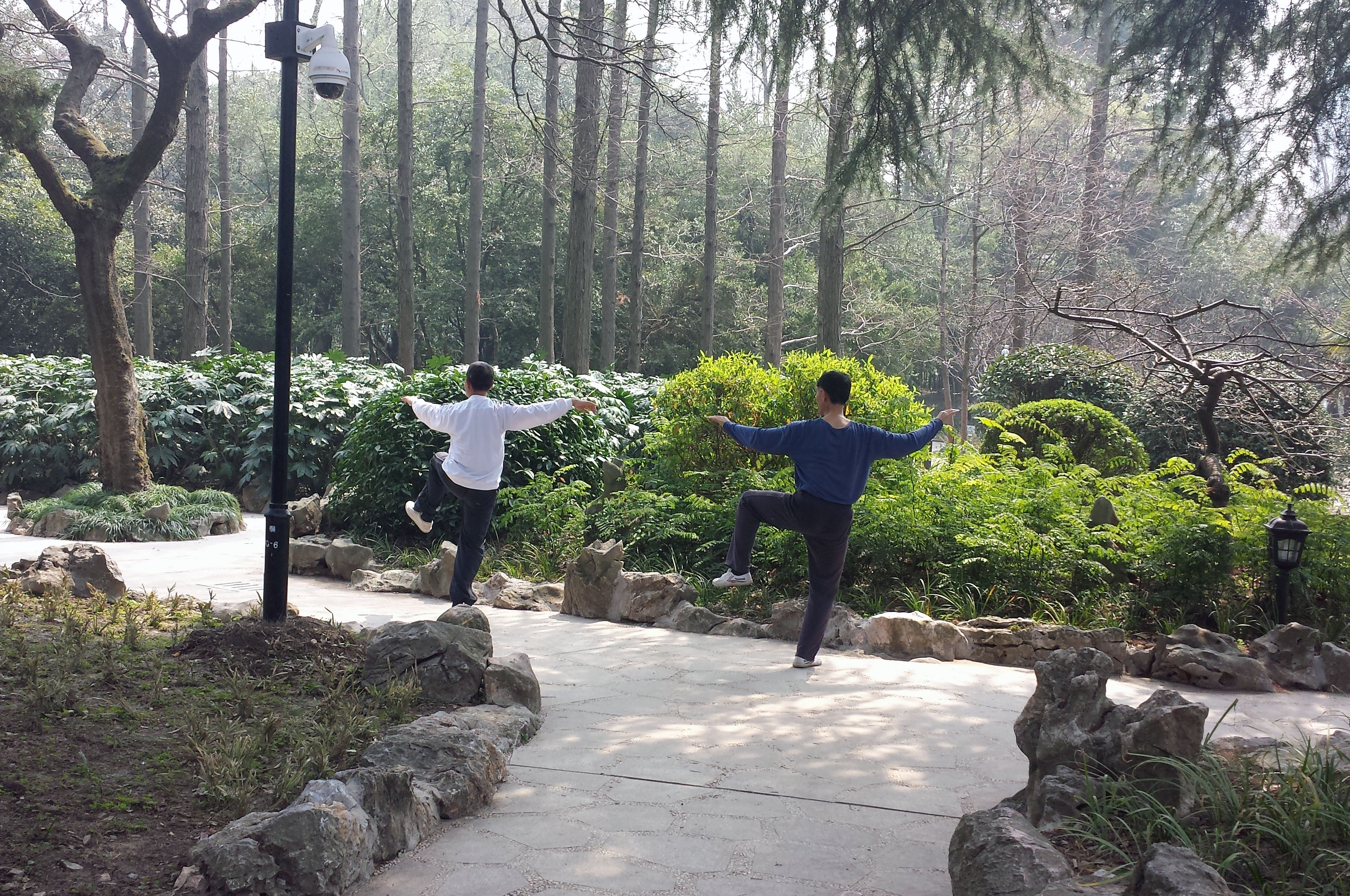
This class examines the idea and practices of ‘cultivation’ in relation to the challenging environment of the 21st century city. Through field trips, readings and discussions, the class explores the concept of cultivation, and how it can be used as a basis for researching the urban ecology of Shanghai, both as a past and future city.
http://cultivatedcity.hosting.nyu.edu/
Instructors:
Anna Greenspan is Assistant Professor of Contemporary Global Media at NYU Shanghai. Her research interests include urban Asia, emerging media, philosophy of technology, and Chinese modernity. Her latest book 'Shanghai Future: Modernity Remade' was published by Oxford University Press in 2014.
This class is co-taught with Francesca Tarocco.
VR / AR Fundamentals
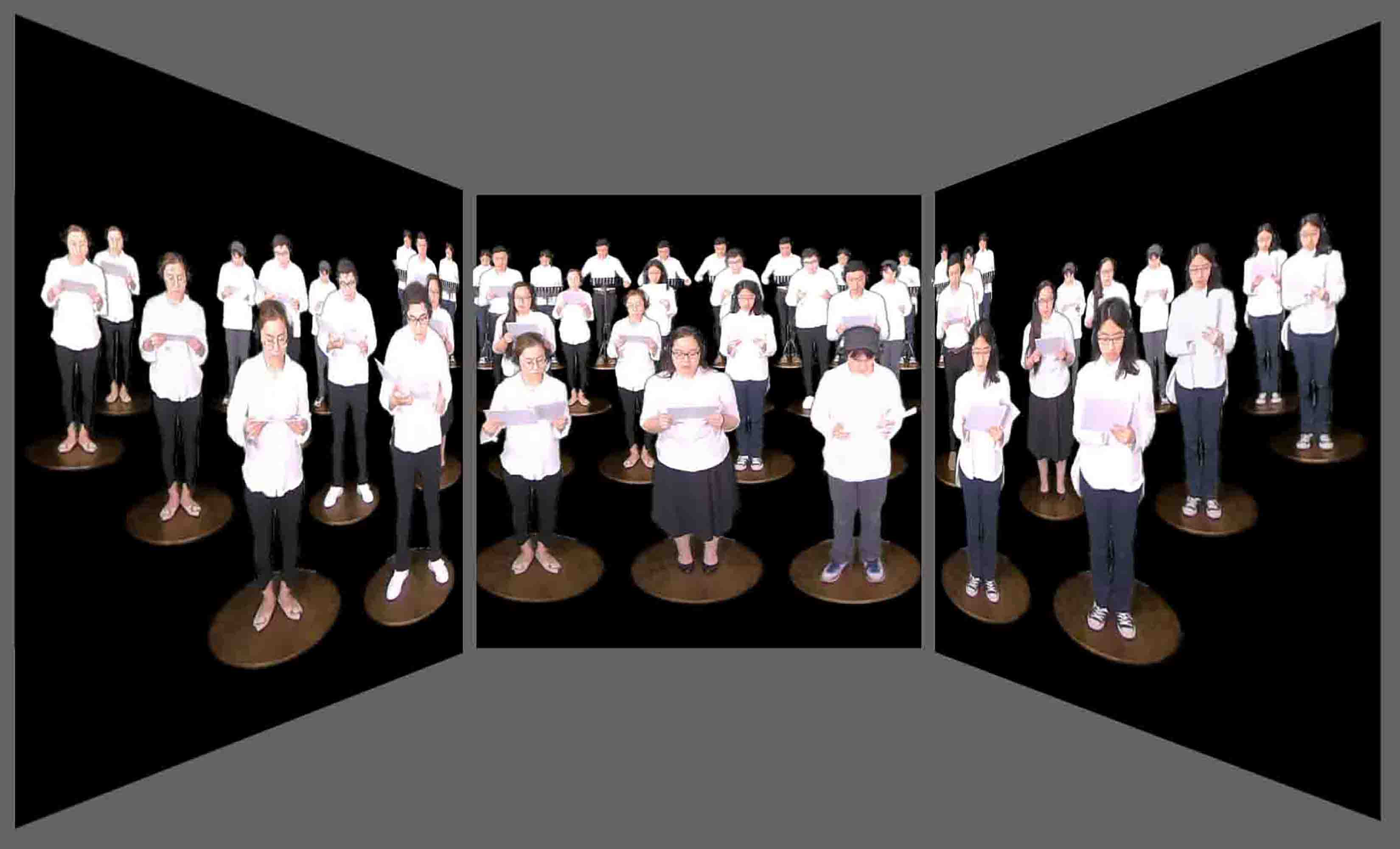
VR / AR Fundamentals is a partial seminar, partial production class. During the first half-semester, it presents an organizational framework for understanding the basic foundations “under the hood” of VR / AR, and during the second half-semester we will produce a series of short, hopefully entertaining, “studies” illustrating various distinctions and ambiguities in VR / AR today.
http://ima.nyu.sh/vr-ar-fundamentals/
Instructor:
Michael Naimark spent several decades mindfully circulating as a media artist inside corporate, art center, and academic circles. His bio in Valley of Genius: The Uncensored History of Silicon Valley (Hachette, 2018) reads “a Silicon Valley–based artist and inventor, with the distinction of having worked in most of the most interesting R&D labs and creative shops in the Valley: Atari Research, the Apple Multimedia Lab, Lucasfilm’s interactive division, Interval Research, and Google’s VR division.” He’s had artist residencies at the Exploratorium, the ZKM, the Banff Centre for the Arts, IAMAS, Ars Electronica, and was a founding board member of Zero1 San Jose. Michael has held several faculty positions including, over the past decade, at NYU Tisch Interactive Telecommunication Program, USC Cinema Interactive Media Division, the MIT Media Lab.
naimark.net

